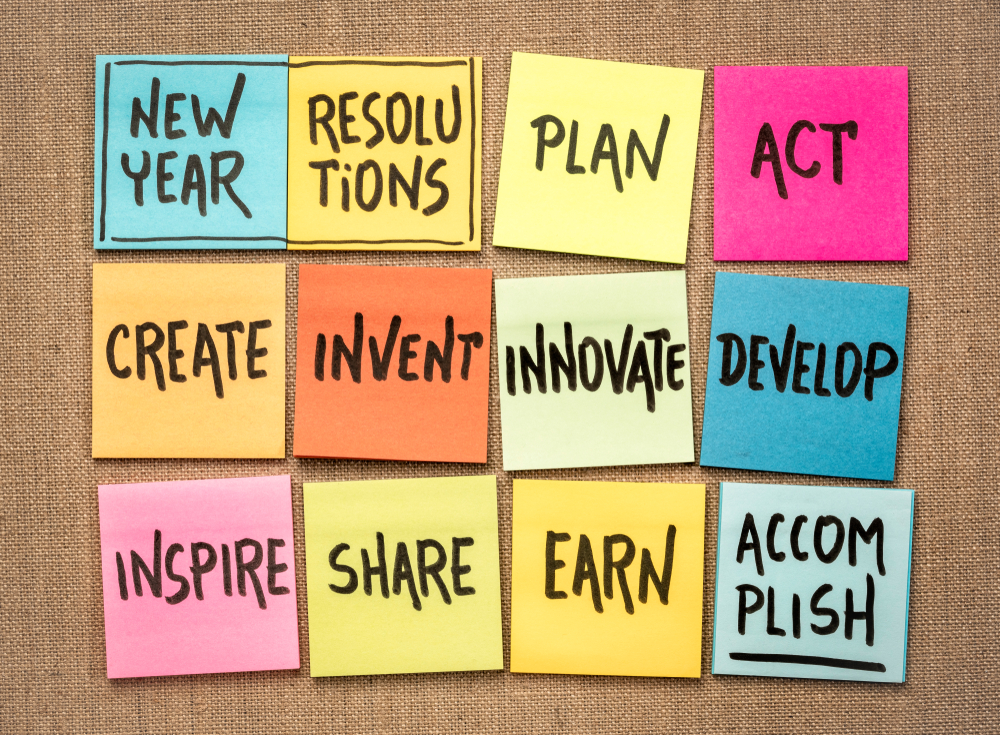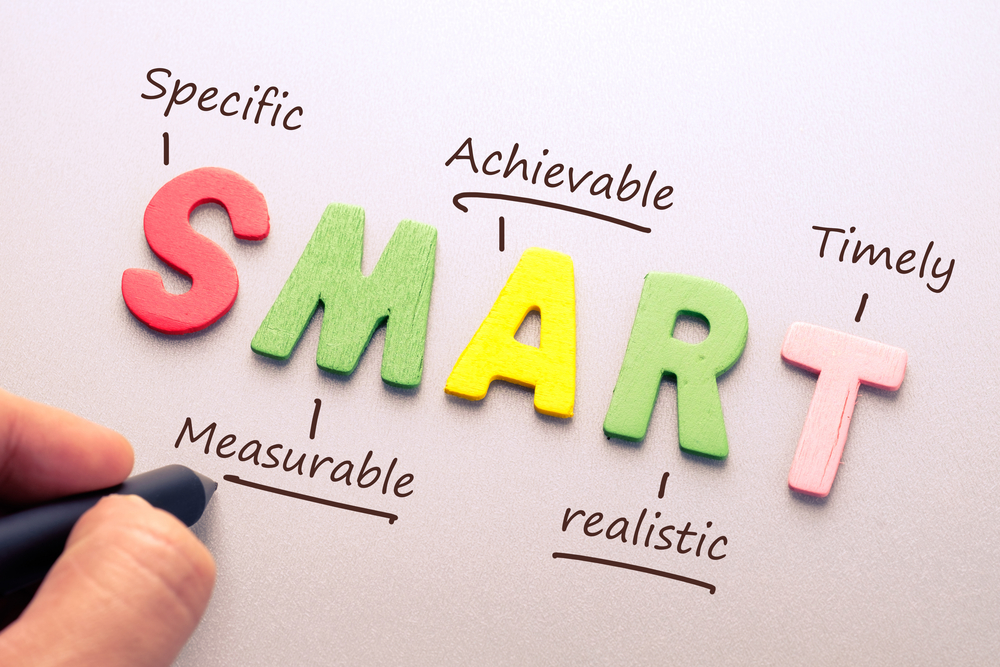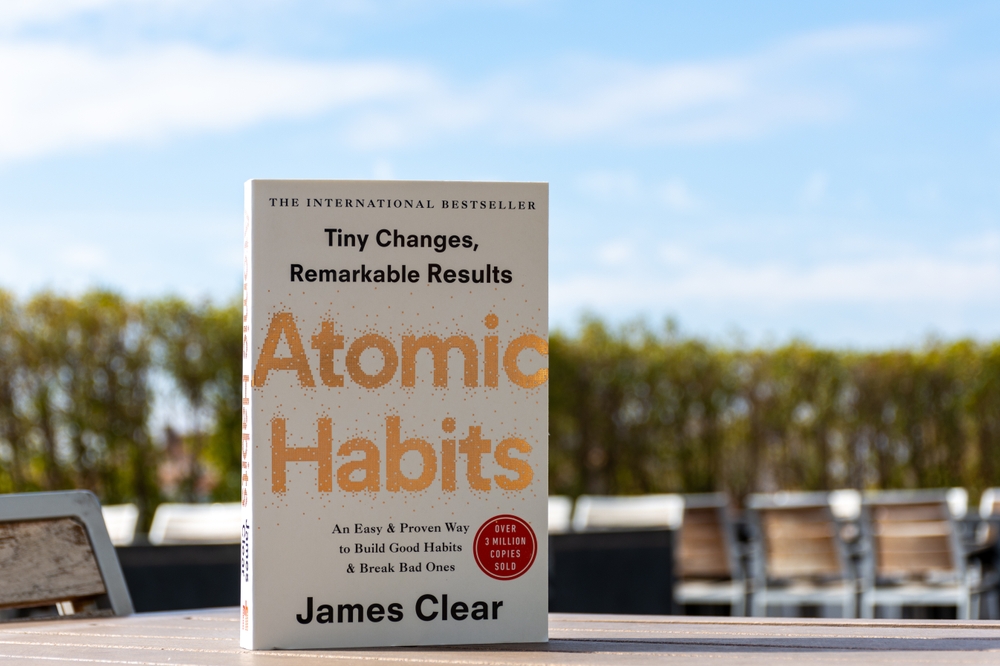New Year’s resolutions are infamously broken, but do you ever wonder why that is? Resolutions are usually long-term commitments and that means they, unfortunately, require hard work. This makes them seem like optional tasks we drop for more appealing, less burdensome goals somewhere through the year.
Though they start off well-intentioned, the bottom line is that year-long commitments easily fail if there isn’t both determination AND planning. The trick to staying on track with your New Year’s resolutions is to eliminate their overwhelming weight.
To do this, we’re introducing the R.E.A.L. Goals — Reflect, Establish, Act, Learn — framework for mindful and achievable resolutions.
By understanding why you want to accomplish your New Year’s resolutions goals, breaking a long-term plan down into short-term goals, finding a plan you can commit to, and learning from your mistakes, the R.E.A.L. method can work better than rushing in at full speed, and full force.
Table of Contents
Reflect
Establish
Act
Learn
Conclusion

Reflect (R)
The Importance of Reflection
Before making any New Year’s resolutions, reflect on your “why.”
Why do you want to do this? Is it because you feel you should be doing something you’re not, or because you know your resolution is something YOU want, regardless of the should’s and shouldn’ts? If your heart isn’t in it, neither will your head, and that sets the stage for success.
Learning From Past Failures
Part of reflecting on your past experiences is understanding where you went wrong with previous failed resolutions. Did you have realistic expectations before? Trying to lose 20lbs in 3 months by going cold turkey on carbs and planning 5am gym workouts might not have been a smart choice.
Or perhaps it was a lack of planning: You wanted to read more, but never bought any books, and always had something planned every weekend.
Understand where you could have done better, and plan to correct those mistakes this year.

Guided Reflection Exercise
To put this into practice, it can be as simple as asking yourself some questions:
- What was my New Year’s resolution last year? How did I try to reach that goal(s)?
- Was I realistic in my plan, or did I just have commitment issues?
- What setbacks caused me to give up my resolution plans?
- Do I want to make the same resolution this year, or have my goals changed?
- Who am I this year in comparison to last year? What changes am I proud of and what changes do I WANT to be proud of?
- What limiting beliefs or fears are going to keep me from hitting my New Year’s resolution this year?
- How would I feel about myself in 6 months if I kept to my New Year’s resolution?
- What is one small thing I can do every day that brings me closer to my resolution?
- Does the thought of making that small change fill me with dread? Can I realistically do that small change?
- What is worth trying to achieve my resolution, even if I might fail?
- What values, principles, qualities, and resources can I use to help me achieve my resolution?
Answering these questions honestly can give some insight into who you are, what you believe, and perhaps how you truly feel about your upcoming resolution.

Establish (E)
Clear Goal Setting
Move from the vague to the specific – a solid goal made up of mini milestones are better met than one giant, end goal.
Specific resolutions have measured results, and you can keep track of your progress.
Being as detailed in your resolution as possible will set you up for better success. For instance, “getting in shape” can mean a lot of things. Do you want to look muscular, be able to run for longer periods, or do you want to lose weight? Instead, a specific goal would be “get my total body fat percentage under 20%” or “complete a marathon in under 5 hours.”
Your end goal is clear and cannot have debatable results.
S.M.A.R.T. Goals
S.M.A.R.T. is an acronym for goals that are specific, measurable, attainable, realistic, and timely. Road mapping your New Year’s resolution with S.M.A.R.T. in mind is more likely to yield better results.

- Specific = The goal is clearly defined and leaves no room for ambiguity.
- Measurable = You are able to track your progress over time.
- Attainable = You are realistically able to achieve your goal within a set time frame.
- Relevant = What you want to accomplish matters to you or holds a significant purpose. Your resolution should align with your personal values and long-term objectives.
- Timely= You have a deadline to reach this goal. This helps you visualize your end goal, prioritize it, and elevate your motivation to achieve it.
Example Goals
What might a S.M.A.R.T. New Year’s resolution look like?
Vague Resolution: I want to eat better.
Specific Resolution: I am going to eat at least a cup of vegetables every meal.
The specific goal is measurable. A cup of vegetables is an unambiguous amount. You can measure a cup of vegetables and you can keep track of what you eat every day.
It’s possible to add a cup of vegetables to every meal, and it’s easy to incorporate that into your diet, making it an attainable goal.
You can keep track of what you eat with a food diary, plan meals, and find recipes that include vegetables you like, creating a game plan that will lead to long-term, long-lasting results.

Act (A)
Create An Action Plan
Your action plan is a step-by-step guide that will make your specific New Year’s resolutions attainable, timely goals you can reach. After you have your S.M.A.R.T. goal, these rules will help you stay committed and focused:
- Solidify your commitment – announce your resolution to others to keep you accountable, kick off the start of your resolution with a ceremony to make it “official,” and take ownership of your resolution by remembering your “why” and acknowledging that YOU are the only one that can make your New Year’s resolution happen.
- Envision yourself at the finish line – picture where you want to be and work backwards from there. How do you get from one small goal to the next? Write down key milestones and decide what you need to do to get there.
- Be willing to be flexible – Setbacks may feel derailing, but one obstacle shouldn’t be enough to take you completely off track. Things might not go exactly according to plan, so adaptability and willingness to adjust your plans are incredibly important. Predict some of the challenges you might face along the way and have contingency plans for them. Mentally preparing for change will keep you flexible.
- Realize your resolution might change – maybe you’ll realize you want a different end goal, or you did end up setting the bar too high. It’s okay to realize this, and that adjustments are necessary and perfectly okay.
- Use reminders – Leave notes or other kinds of reminders where you can see them – on the bathroom mirror, on your computer screen, or in the car. Set phone alarms to keep you on schedule. Or write out and check off daily to-dos at the end of the day. The point is to have something to remind you to get your smaller goals done each day.
- Track your progress – Use a journal, take a picture, make an Instagram post talking about what you did that week. Anything to measure how far you’ve come, and where you still need to go.
- Treat Yo’self – Anytime you reach a milestone, or accomplish a hard task (or heck, even if you just want to celebrate doing the everyday stuff) don’t be afraid to celebrate with a reward of some kind!
Build Habits
As a writer and speaker on habits, decision making, and continuous improvement, James Clear has written a book called Atomic Habits which outlines practical strategies for effective habit forming.
Clear emphasizes the concept of small, consistent changes, or what he calls “atomic habits.” These tiny shifts in behavior seem insignificant, but they add up over time to create lasting results.

From his work, there are 3 key lessons to take away for your New Year’s resolution:
1. Small habits make a big difference
Getting better by even 1% a day will eventually add up. If you do a little bit better day by day, by the end of the year, even if you haven’t reached your initial goal, you are still far ahead than where you were at the start.
2. Forget about goals, focus on your system instead
Instead of focusing on reaching goals, focus on creating a better system of accomplishing them.
Your “system” is the process or processes that lead to you accomplishing your goal. If you’re having trouble meeting your New Year’s resolutions, the problem might not be you, it might be your system.
3. Build identity-based habits
Your current system and habits were built by who you are. Everything you do is a reflection of your identity. To change your system for the better (and by extent, you), your attitude about yourself might need to change. To do this, you must decide what kind of person you want to be and prove that you can become them with small wins. From there, your new identity will emerge.
Overall, Clear’s strategies focus on the concept that slow and steady wins the race. Adjust your process and take each win, no matter how small, as a sign of success.

Overcome Procrastination
Here are some useful ways to tackle your procrastination:
- Break larger tasks down into more manageable, smaller ones
- Set deadlines for those smaller goals
- Prioritize the most important task on your list
- Develop a sense of urgency. Don’t tell yourself “You have all year”
- Focus on the reward you’ll have once a smaller task is done
- Minimize distractions (like your phone and computer) until your priorities are taken care of

Learn (L)
Embrace Failure As A Learning Opportunity
When creating your S.M.A.R.T. New Year’s resolution action plan, know that failure is not an end-all situation. In fact, setbacks along the way shouldn’t be seen as failures at all. Instead, treat obstacles as learning opportunities that will help you achieve your resolution.
Continuous Adjustment
Things won’t always go according to plan but take the time to adjust your plans so that they better fit your needs. For instance, there are no rules that say you NEED to accomplish your New Year’s resolution by December. And there is no rule that says your resolution has to involve eating better, losing weight, or any other cliché.
A New Year’s resolution should be seen as an opportunity, not a burden. Make it feel like something you want to do and are excited about.
Conclusion
Recap Of The R.E.A.L. Goals Framework
When developing your R.E.A.L. action plan, the main takeaways are to
- Understand yourself and make a resolution according to what YOU want, not what others think you should.
- Set a S.M.A.R.T. goal that is specific, measurable, achievable, relevant, and timely.
- Develop an action plan using atomic habits: working towards your end goal slowly, perfect your system, and focus on the kind of person you want to be to create identity-based habits.

Why This Year Is Different
This year is different because you have the right tools to create a better New Year’s resolutions action plan.
You know that research-backed strategies like S.M.A.R.T. goal setting have been shown to be effective action–based planning tools. And that James Clear’s Atomic Habits create long-lasting habits by focusing on personalized planning, decision-making, and adjustment.
You also know that by learning from your past experiences with resolutions, that you must have clear goals in mind, and that your plan should fit your needs.
And now, you have the aid of the R.E.A.L. strategy to combine it all into one ultra-effective, mindful New Year’s resolution super strategy!
Encouragement To Take The First Step
This year, seize the opportunity to turn your aspirations into reality. Take that first step towards a more fulfilling and purpose-driven life. Begin your New Year’s journey using the R.E.A.L. framework and see your resolutions become, well, real!





